Japanese Physicists Claim Clinching Observation of
New Superheavy Element
It's not the first time physicists have claimed the discovery of element 113. A collaboration of researchers from Lawrence Livermore National Laboratory in California and the Joint Institute for Nuclear Research in Dubna, Russia, reported production of the element in 2003. The Japanese team, which is based at the RIKEN Nishina Center for Accelerator-Based Science in Wako, made a similar claim in 2004. But neither of those results was conclusive, researchers say. The RIKEN team now makes a "very strong case," says Christoph Düllmann, a nuclear chemist at the GSI nuclear research lab in Darmstadt, Germany. "We clearly have to congratulate them. This has taken years and years of work." Others say they are reserving judgment on who should get the credit for the discovery.
An element's chemical identity is set by the number of protons in its nucleus—its atomic number. All elements with an atomic number greater than uranium's 92 don't exist naturally on Earth and must be produced in nuclear reactors, nuclear explosions, or by using particle accelerators. The tradition is that whichever lab makes a new element gets to suggest its name and hence we already have dubnium (element 105), darmstadtium (element 110), and berkelium (element 97) after the Lawrence Berkeley Laboratory, the third lab that has dominated the field of superheavy elements. RIKEN researchers are the new guys on the block and element 113, if confirmed, would be their first official discovery.
Physicists make superheavy elements by taking a target film of a heavy metal and bombarding it with a beam of lighter nuclei. Very rarely, one of the projectiles hits a nucleus head-on and forms a compound nucleus which flies out of the foil from the force of the collision. The nucleus will spit out a few neutrons to shed excess energy before arriving at the detector, a heavily instrumented block of silicon. Once it is there, researchers can detect the timing of any decays and the energy of the decay products.
If the nucleus just splits apart, or "fissions," it tells researchers little. They learn more if instead it emits an alpha particle (two protons and two neutrons) to produce a "daughter nucleus" and then that emits another alpha and so on. The timing and energies of the alpha decays reveals the identities of all the members of the chain back to the original nucleus. And if one member of the chain is a nucleus that has been previously studied, then its decay properties anchor the whole sequence in reality.
That anchor decay has been missing in the search for element 113. In 2003, the Dubna team claimed to have made one atom of it by bombarding americium with calcium to produce an atom of element 115, which then quickly decayed to 113 and then lighter elements. The team later found three more similar chains. RIKEN researchers use a slightly different technique in which they slam zinc into bismuth, detecting one atom of element 113 in 2004 and another in 2005. But none of the decay chains detected included an anchor decay. So last year, the International Union of Pure and Applied Chemistry (IUPAC) and the International Union of Pure and Applied Physics (IUPAP), the keepers of the periodic table, decided that neither team could claim discovery.
Kosuke Morita, leader of the RIKEN team, says that his team's new result—a single decay—overcomes these shortcomings. The team's first two decays emitted alphas four times to produce a nucleus of dubnium with an atomic weight of 262 which then split apart by fission. But dubnium-262 is known to have an alternative decay path involving more alpha decays. And Morita's team's third atom took that path, decaying to previously-studied lawrencium-258 followed by mendelevium-254 and then fissioning, as the researchers report this week in theJournal of the Physical Society of Japan. "Morita and team have a very good claim. It's a very good landing point in known isotopes," says Heino Nitsche of Lawrence Berkeley National Laboratory in California.
Game, set, and match? Not quite. The Dubna researchers have also accumulated additional evidence to support their claim, which they submitted to IUPAC and IUPAP earlier this year. Dubna researchers have now made a total of 56 atoms of element 113 with five different masses, says team leader Yuri Oganessian. Because the Dubna team used a different target and projectile than the Japanese, all of their decay chains end in the fission of dubnium. However, the chemistry of dubnium had been studied previously, so the team was able to identify that final single atom in the decay chain by chemical means before it fell apart. "You have to commend them," Nitsche says. "But the results are not unambiguous. There are a few experts who are not completely convinced."
Oganessian declines to say who he thinks IUPAC and IUPAP should credit with the discovery. "It would be unethical and incorrect to discuss the issues that are directly connected with the work of experts before they make their decision," he says. He does note, however, that elements 114 and 116 have been credited without the demonstration of an anchor decay. Ultimately, the decision may be a matter of scientific taste, says GSI's Düllmann: "In the end it boils down to which [type of evidence] does IUPAC like best?"
http://bit.ly/UJY91k
Japan and China on a conflicting course
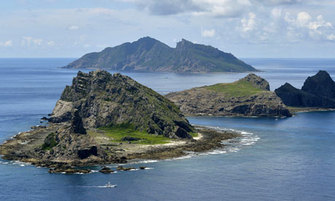
Unlike previous cases, the latest handling of the crisis has shown obvious misperceptions between the two nations. In so far as China's repeated claim on the disputed islands is not recognized by Tokyo, Japan's handling of the issue is also not seen as a conflict resolution gesture to Beijing but rather, a serious encroachment of its interest and territorial integrity.
The fear of diplomatic backlash with China if the issue is played up by the right-wing Ishihara required the Japanese central government's swift response to nationalize the islands before spiraling out of its control. What the Yoshihiko Noda administration hoped to achieve out of this is to preserve the islands' status quo where the issue is kept from affecting the overall Sino-Japanese relations. Politically too, Noda is using the issue to garner more public and internal support after the passing of its unpopular sales tax hike bill in August and the coming Democratic Party of Japan (DPJ) presidential election.
The Chinese government, meanwhile, thinks otherwise. As part of its territories which is currently administered by Tokyo due to historical reasons, there existed a dispute between the two nations and any unilateral attempt by Tokyo is a direct violation against Beijing's national interest and recognition.
The latest islands bid, be it symbolic or "legal", is viewed by the Chinese leadership as an effort to "wrest control" over the islands against China's interests and thereby, alter the present status quo of the islands. Moreover, the purchase has also shown Tokyo's unwillingness to bend on the dispute, something which the Chinese authorities had hoped for in the past.
The road ahead
Unlike the September 2010 trawler collision near the contented islands, Beijing seemed to have learnt a valuable lesson not to over-play its card as a means of forcing the Japanese government to back down. So far, Beijing has remained reactive to Tokyo's move, preferring to observe as to how far the unusually assertive Noda administration would pursue on the Senkaku/Diaoyu Islands case before taking stern measures to stake its claim on the islands.
In fact, recent discourses by Chinese leaders have hinted that Beijing may have reached its acceptable limits following the Japanese government's unusual assertiveness in ramming ahead the purchase plan of the disputed islands.
As demonstrated during Asia-Pacific Economic Cooperation (APEC) meeting in early September, Chinese President Hu Jintao's outright rejection of any official sideline meeting with Prime Minister Noda had signaled that another round of frozen Sino-Japanese diplomatic ties reminiscent of the Koizumi years may be well ahead of us. Even the 15-minute informal conservation with his Japanese counterpart was marred with Hu's serious warning on the repercussions that the islands purchase would inflict to the overall bilateral relations coupled with his reiteration of China's will to defend its sovereignty at all costs.
A day later, on September 10, Chinese Premier Wen Jiabao, also reaffirmed China's unwavering stand to stake its claim on the islands and pledged against making any concession with Japan regarding its islands' sovereignty. By far, these two statements are the strongest ever been by members of the top leadership ever since the islands purchase proposal was mooted by Ishihara in April.
At the same time, there is also news that the People's Liberation Army (PLA) is stepping up its military preparedness in the middle of the crisis. On September 6, the Jinan Military Region held a military operation in which it focused on a marine group landing and taking control of an island near the Yellow Sea. It seemed to indicate that the PLA is seriously contemplating similar operation if there is a need for military action on the Diaoyu Islands issue. Apart from that, Beijing may choose to employ its economic pressure once again against Japan after its successful attempt following the Chinese trawler collision incident in September 2010.
For Japan, it is highly questionable on whether the Noda administration is prepared or able to confront the prospect of temporary or small-scale skirmish with Beijing. While the Japanese Self-Defense Forces (JSDF) already had an operation plan to defend the Senkaku Islands, the weak central government mired with a myriad of problems, from internal party bickering to domestic economic woes, meant there is no guarantee that Tokyo is ready for full mobilization of all its resources in response against Beijing's armed and economic reprisals. Also, the whole situation would become extremely dangerous and complicated if Japan seeks cooperation from its close ally, the United States in order to respond to China's retaliatory measures at an advantage.
With all these developments in sight, it is highly skeptical to concur to any view that China would take more conciliatory approach as evident in the South China Sea dispute. The central leadership transition later this year, strong anti-Japanese sentiment in China and grave public outcry to what is perceived as Beijing's passive take on the islands issue, meant that the same instance of Beijing's diplomacy of restraint toward Japan may not apply this time around.
It is crystal clear that the Noda administration's nationalization drive of the islands has failed in alleviating concern from the Chinese top leadership and defusing the Sino-Japanese territorial tension. On the contrary, it heightened political apprehension with Beijing as the latter viewed the move as changing the status quo of the islands. That China's reprisals against Japan may begin with the signing of a purchase agreement between Tokyo and the islands' private owner, has shown that we are braving for a political storm ahead of us.
http://www.atimes.com/atimes/Japan/NI15Dh01.html
An official end to Philippines' Moro rebellion
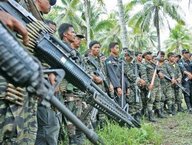
in a village in Mamasapano, Maguindanao
province. The government and the Moro Islamic
Liberation Front (MILF) have announced a
framework agreement aimed at settling the
40-year guerrilla war in Mindanao and the Sulu
archipelago.
While the stirrings for Moro revolution emerged after the infamous Jabidah Massacre on Corregidor Island on March 17, 1968, it was not until Nov. 14, 1972, that "the guns of the Moro National Liberation Front (MNLF) started to speak," Salah Jubair wrote in the book "Bangsamoro: A Nation Under Endless Tyranny."
The first assault was in Jolo, Sulu, a month after then president Ferdinand Marcos declared martial law. Rebels put the town to the torch in an attack reminiscent of the World War II bombing of Manila by Japanese invading forces.
In all, the Moro rebellion is estimated to have claimed some 120,000 lives and kept Mindanao impoverished.
The preliminary pact provides the "overarching architecture" for the process of addressing the so-called Bangsamoro question, defining the powers and structures of a new self-governance entity that will replace and have far greater political and economic powers than the current Autonomous Region in Muslim Mindanao (ARMM).
It also lays down the principles, processes and mechanisms "that will shape the new relations between the Central Government and the Bangsamoro."
Bangsamoro force
Although details are still to be threshed out, the agreement enshrines the MILF's agreeing to "undertake a graduated programme for decommissioning of its forces so that they are put beyond use."
In turn, the government agrees to "a phased and gradual" transfer of law enforcement functions from the Armed Forces of the Philippines to a Bangsamoro police force, which is also to be defined further.
Chief government negotiator Marvic Leonen has said the decommissioning of the Bangsamoro Islamic Armed Forces, the MILF's armed wing, "can keep apace within the period of transition" from the ARMM to Bangsamoro. This means within the next two years.
By mid-2016, the first set of elected Bangsamoro leaders, to rule under a ministerial government, is expected to assume power.
"The agreement heralds a change of status of the parties vis-a-vis each other, from enemies to partners," Leonen said.
With an estimated 12,000-strong army, the MILF is the remaining Moro revolutionary group in Mindanao which enjoys international legitimacy.
The self-styled Bangsamoro Islamic Freedom Movement, a band of some 300 armed men led by erstwhile commander Ameril Umra Kato, has been relegated by authorities to "a lawless group" that will be subjected to joint pursuit efforts by government and the MILF.
Although still posturing as a revolutionary movement, the MNLF has disintegrated into various factions after it signed a final peace agreement with the government on Sept. 2, 1996.
The MILF itself split from the MNLF in 1977 over differences in strategy and political outlook.
Apprehension
National Democratic Front chief Luis Jalandoni has expressed apprehension at the overdependence on legal and constitutional processes for entrenching the Bangsamoro.
But MILF chief negotiator Mohagher Iqbal said they were confident the government would fulfil its commitments especially in the face of a very high international interest on the Mindanao peace process.
MILF chief Murad Ebrahim has praised President Aquino for his "unflinching commitment to justice and reforms" which is "amply manifested by the exercise of his resolute political will to resolve the Bangsamoro question on the negotiating table."
In a statement, the MILF said the framework agreement "is a template for real self-rule for the Bangsamoro in Mindanao."
"It is a solid document, [although] short of the ideal option providing for an independent state," it added.
"Of course, it is not a perfect agreement, especially for those who wish for a better one. But for those who have been in the negotiation since 1997, especially negotiators of the MILF, the agreement is the best," the MILF stressed.
"There could never be another like it, because so much blood, sweat and tears have been invested in it, and there would have been no time in the past and perhaps in the future that such agreement will ever be possible."
http://www.asianewsnet.net/home/news.php?sec=1&id=37624
Pakistanis Unite In Outrage Over Girl's Shooting By Taliban
A Taliban gunman singled out and shot the girl, Malala Yousafzai, on Tuesday, and a spokesman said it was in retaliation for her work in promoting girls’ education and children’s rights in the northwestern Swat Valley, near the Afghan border.
Ms. Yousafzai was removed from immediate danger after the operation in a military hospital in Peshawar early Wednesday, during which surgeons removed a bullet that had passed through her head and lodged in her shoulder, one hospital official said.
The government kept a Boeing jet from the national carrier, Pakistan International Airlines, on standby at the Peshawar airport to fly Ms. Yousafzai to Dubai, United Arab Emirates, for emergency treatment if necessary, although senior officials said she was too weak to fly.
“She is improving. But she is still unconscious,” said Mian Iftikhar Hussain, the provincial information minister, whose only son was shot dead by the Taliban in 2010. He said Ms. Yousafzai remained on a ventilator.
Mr. Hussain announced a government reward of more than $100,000 for information leading to the arrest of her attackers. “Whoever has done it is not a human and does not have a human soul,” he said.
Across the rest of the country, Pakistanis reacted with outrage to the attack on the girl, whose eloquent and determined advocacy of girls’ education had made her a powerful symbol of resistance to Taliban ideology.
“Malala is our pride. She became an icon for the country,” Interior Minister Rehman Malik said.
The army chief, Gen. Ashfaq Parvez Kayani, visited the Peshawar hospital where Ms. Yousafzai was being treated; in a rare public statement he condemned the “twisted ideology” of the “cowards” who had attacked her. Her parents and a teacher from her school remained at her side in the hospital.
Imran Khan, the cricket star turned opposition politician, offered to pay for her treatment, while officials from his party parried accusations that they were soft on the Taliban.
Last weekend Mr. Khan led a motor cavalcade of supporters to the edge of the tribal belt as part of a demonstration against American drone strikes in the area — a theme that, until now at least, has frequently been a more concentrated focus of public anger than Taliban violence.
Even Jamaat ud Dawa, the charity wing of the militant group Lashkar-e-Taiba, which follows a different strain of Islam from the Taliban, condemned the attack. “Shameful, despicable, barbaric attempt,” read a message on the group’s official Twitter feed. “Curse b upon assassins and perpetrators.”
The anger was amplified by the Taliban’s brazen claims of responsibility for the shooting, and by avowals that the group would attack Ms. Yousafzai again if it got a second chance. Reports circulated that the Taliban had also promised to target her father, Ziauddin Yousafzai, who privately appealed to neighbors from Swat not to visit the hospital in case of a second attack.
In the Swat Valley, private schools remained closed in protest over the attack.
Some commentators wondered whether the shooting would galvanize public opinion against the Taliban in the same way as a video that aired in 2009, showing a Taliban fighter flogging a teenage girl in Swat, had primed public opinion for a large military offensive against the militants that summer.
“The time to root out terrorism has come,” Bushra Gohar of the Awami National Party, which governs Swat and the surrounding Khyber-Pakhtunkhwa Province, told Parliament.
But no military drive is in the works in Swat for the moment, officials say — in fact, a large army contingent has occupied the picturesque mountain valley since 2009, which contributed to alarm by the prospect of a Taliban resurgence in the area.
Among some commentators, there was a sense that rage was redundant: that unless Pakistan’s military and civilian leaders drop all equivocation about Islamist extremism, the country is likely to suffer further such traumas.
“We are infected with the cancer of extremism, and unless it is cut out we will slide ever further into the bestiality that this latest atrocity exemplifies,” read an editorial in The News International, a major English-language daily.
http://nyti.ms/RwCchn
'Life Of Pi Reviews: What Are Critics Saying About Ang Lee's New Movie?
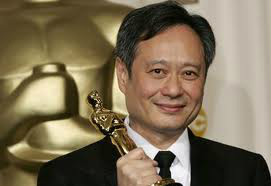
Based on Yann Martel's Booker Prize-winning novel, the movie follows Pi (Suraj Sharma), a zookeeper's son, who finds himself adrift on a small lifeboat after his ship was destroyed in a storm. He, of course, is not quite alone: Pi is accompanied by a a zebra, a hyena, an orangutan and a not-so-friendly Bengal tiger -- all of whom are fighting for their survival.
Take a look at our review round-up to see if the flick lives up to the source material.
http://huff.to/UThxUL
IgNobel Prize Winner in Acoustics: The SpeechJammer. The shut up machine for the passive aggressive.
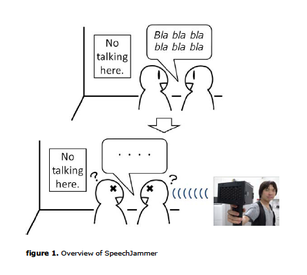
Have you ever had to listen to someone who just won’t. Shut. Up. Have you ever been stuck in a library or on the quiet car of a train, giving passive aggressive dirty looks to talkative passerby? Well suffer no more from lack of silence! This speechjammer will solve all of your problems, using the power of SCIENCE.
How does it work? How do you stop other people from talking without going “SHH!”. What you need is delayed auditory feedback. When we speak, we not only generate sound, but we rely on auditory feedback to make sure that what we are saying is coming out right. If we suffer problems with auditory feedback, such as a very short delay between the production of speech and hearing it, we will begin to stutter and eventually come to a stop.
So all you have to do if you want to shut someone up is induce some delayed auditory feedback. The designers of this device invented a microphone hooked up to a speaker, aimed at the person chattering (in the portable version, this looks a lot like those guns they use to track whether or not you’re speeding on the highway). The microphone records the chatter and induces a small delay (which you can control, depending on the distance from your target, so you get the maximal interference), and then plays your own voice back at you.
They even let me test it! And I have to say it’s a very disconcerting experience. As one of the authors noted, we really don’t like the sound of our own voice talking over us.
So what would be use of such a device? Well, apart from the obvious uses by passive aggressive people in quiet spaces, the author propose a potential use for helping to moderate things like group debate. When you need someone to shut up and given someone else a turn, you can turn the SpeechJammer on them and watch them lapse into silence. The psychological effects of the SpeechJammer on the person who want quiet should be pretty positive. But the psychological effects on those made to shut remains to be seen.
p.s: IgNobel - The Ig Nobel Prizes are an American parody of the Nobel Prizes and are given each year in early October for ten unusual or trivial achievements in scientific research. The stated aim of the prizes is to "first make people laugh, and then make them think". The awards are sometimes veiled criticism (or gentle satire). Organized by the scientific humor magazine Annals of Improbable Research (AIR), they are presented by a group that includes Nobel Laureates at a ceremony at Harvard University's Sanders Theater, and they are followed by a set of public lectures by the winners at MIT.
http://bit.ly/SIeai2
Also, if you wish, you can add a YouTube video or a picture.
Please include links to the original news story.
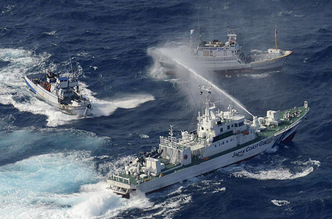

 RSS Feed
RSS Feed